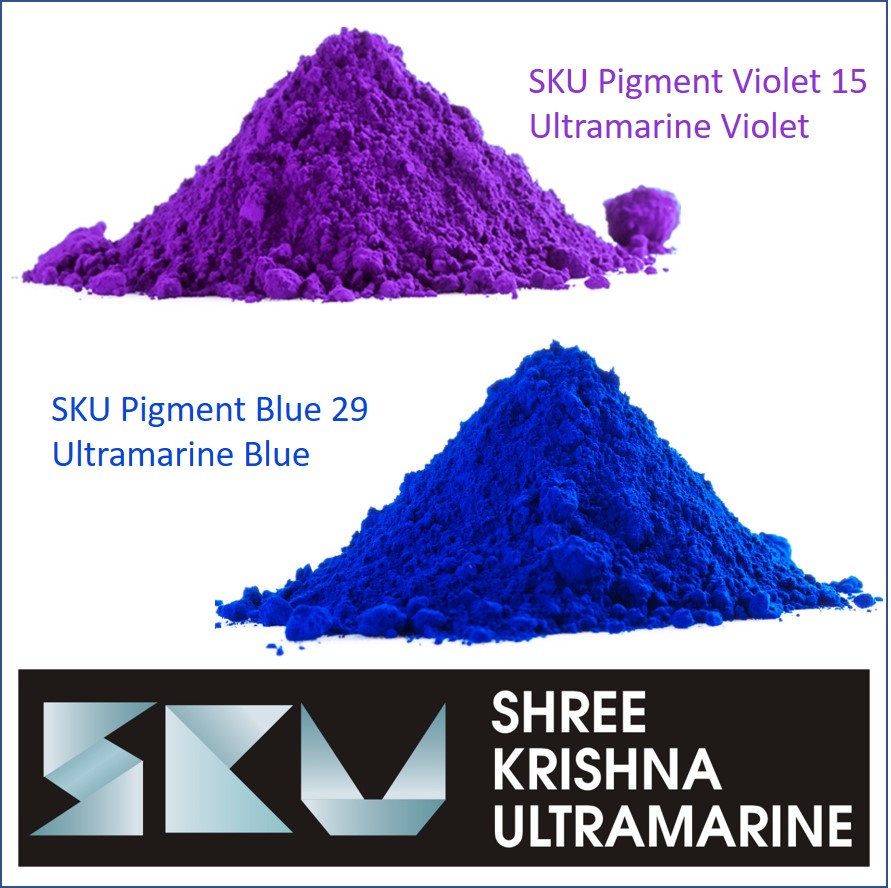Ultramarine Pigments: From Ancient Art to Modern Industry

For centuries, color has shaped art, design, and industry. Among the most iconic hues, Ultramarine stands out for its vivid tones. Today, companies like SKU Pigments supply high-quality Ultramarine pigments, including Ultramarine Blue, Ultramarine Violet, Pigment Blue 29, and Pigment Violet. From construction and cosmetics, Ultramarine has become the mainstay of modern blue pigments.
The Journey of Ultramarine Through Time
The name Ultramarine comes from the Latin “ultra mare,” meaning “beyond the sea,” a reference to lapis lazuli originally imported from Afghanistan. For centuries, it was a rare treasure, used by Renaissance masters to paint sacred art. It symbolized purity and heaven.
Modern chemistry made it possible to manufacture Ultramarine pigments, bringing the once-exclusive shade into global industries. This breakthrough turned a precious rarity into a accessible solution for countless sectors.
Why Ultramarine Blue Leads the Industry
Ultramarine Blue pigments—the synthetic form of Pigment Blue 29—are the most widely used. Known for their lasting vibrancy, they are sustainable and reliable. They are used in:
• Paints and coatings for rich tones.
• Plastics and rubber, thanks to chemical safety.
• Publishing and packaging, where clarity is vital.
• Cosmetics, given their skin-safe quality.
This balance of economy and brilliance keeps Ultramarine Blue among the global color leaders.
Exploring the Subtlety of Ultramarine Violet
Ultramarine Violet offers delicate hues that appeal in cosmetics. Pigment Violet derived from Ultramarine is highly dispersible, making it ideal for children’s toys.
Its muted shade enhances luxury packaging, while ensuring longevity without chemical breakdown.
How Pigment Blue 29 Powers Industries
Pigment Blue—particularly Ultramarine Blue pigments—remains a trusted industrial choice. It offers weather resistance for:
• Vehicle coatings with lasting vibrancy.
• Branding, ensuring long-term appeal.
• Construction materials, adding strength and aesthetics.
This cross-sector utility ensures Pigment Blue’s future relevance.
Advantages of Ultramarine Pigments
• Non-Toxic & Safe: Suitable for sensitive products.
• Heat & Light Resistant: Stable in outdoor use.
• Eco-Friendly: Reduced environmental impact.
• Cost-Effective: Affordable vs. natural pigments.
• Versatile: Across paints, plastics, Ultramarine Blue printing, and construction.
Applications Across Sectors
1. Paints & Coatings: Decorative finishes.
2. Plastics & Rubber: Safe for packaging.
3. Cosmetics: Skincare-safe pigments.
4. Construction: Plaster and decorative finishes.
5. Printing & Inks: Vivid packaging inks.
The SKU Pigments Advantage
SKU Pigments stands among global suppliers, offering eco-conscious solutions in Ultramarine pigments. Their product portfolio includes:
• synthetic Ultramarine for industrial-scale use.
• Ultramarine Violet and Pigment Violet for luxury tones.
• Custom shades for niche industries.
Their reputation is built on global reach and eco-friendly production.
Conclusion
From a rare treasure to the backbone of blue pigments, Ultramarine has remained relevant for centuries. Whether it’s the timeless vibrancy of Ultramarine Blue, the subtle elegance of Ultramarine Violet, or the stability of Pigment Blue 29, Ultramarine pigments remain indispensable.
With SKU Pigments as a leading manufacturer, industries secure reliable pigment supply. As demand for eco-friendly pigments rises, Ultramarine will lead in global markets.
Common Queries About Ultramarine
1. What is Ultramarine?
One of the world’s most trusted synthetic pigments.
2. What is Pigment Blue 29?
A widely used industrial pigment.
3. Where is Ultramarine Violet used?
In fine arts and specialty industries.
4. Are Ultramarine pigments safe?
Yes, non-toxic and eco-friendly.
5. Why choose SKU Pigments?
Leaders in Ultramarine innovation.